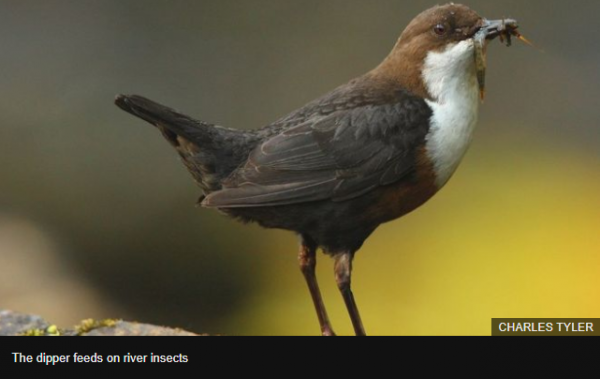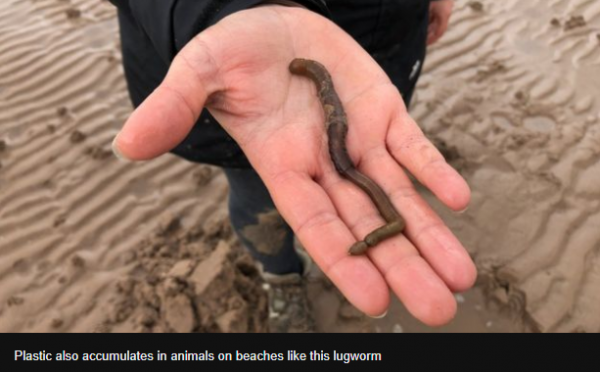-
Posts
20,850 -
Joined
-
Last visited
-
Days Won
49
Everything posted by CaaC (John)
-
First white storks born in England in 600 years shock onlookers This is definitely something you don't see every day. The first white storks born in England in more than 600 years have shocked bird watchers, as they've come out of their nest for the first time, British news agency SWNS reports. The baby chicks, who live in a nest at Knee Castle near Horsham, West Sussex, were spotted poking their heads out when one of their parents returned. The birds were born as a part of the White Stork Project, which is a group of "private landowners and nature conservation organizations" working to bring the birds to South East England for the first time in several hundred years. The organization is working to restore a population of 50 breeding pairs by 2030, which will be aided by the new chicks. There were five eggs in the nest as late as April, SWNS added. A spokesman for the project told the news outlet the female is a ringed bird from the project. The male, however, does not have an identifying ring, so it's possible it could be one of approximately 20 storks that visit the country every year. It's unclear why the storks, which are "symbolic of rebirth" according to the project, did not survive in Britain. A number of theories suggest habitat loss, overhunting and "targeted persecution" all contributed to the decline, given it was associated with rebellion during the English Civil War. Species that have gone extinct in our lifetime SLIDES - 1/24
-
I use my Samsung mobile for all my photos and I have a few shots like these saved into my photo files.
-
Always said I would love to get a camera and shoot the night sky and now you have got me going and maybe I will invest in a good camera, as you know I love space and astronomy and this is my laptop desktop photo of the Milkyway.
-
Cheers buddy, just nipping up the shop for some fresh air and keep my muscles from locking up then coming back and having a wee non-virus drink with the wife.
-
Well, guys, I am 71 today and just had a wee visit from our daughter and wee Kaiden which was great but horrible really as they stood at the end of the stairs, no kisses or cuddles and wee Kaiden singing "Happy Birthday Granddad...", once again FUCK THIS VIRUS!! Got some nice prezzies too and the card the daughter made was from a photo of me and wee Kaiden when he was 3 years old or thereabouts, one of her favourites photos and it's from wee Kaiden showing me how to assemble a bloody lego man ... Now 6 years old A nice pillow for my big fat arse and some Star Trek socks
-
One of the world's smallest cats chirps like a wee bird, the first-ever audio recording reveals The güiña is the 10,000th species in the National Geographic Photo Ark. (Image credit: © Photo by Joel Sartore/National Geographic Photo Ark) The smallest wild cat in the Western Hemisphere is about the size of a domestic house cat, with tiny, rounded ears, a face resembling a cheetah cub's, and a bushy, striped tail. It also sounds remarkably like a chirping bird; you can hear its burbling chirrups in a new recording, thought to be the first published audio of these endearing vocalizations. Known as a güiña (Leopardus guigna), a kodkod and a Chilean cat, this pint-size feline is native to temperate forests in southern and central Chile, and in western Argentina. And it recently became the 10,000th species to be photographed for the National Geographic Photo Ark, a database of animal portraits celebrating global biodiversity, by photographer Joel Sartore. Sartore's thousands of animal portraits, collected over more than a decade, call attention to the beauty of a wide range of species from across the animal kingdom. His images of the graceful güiña are no exception, and his session with the photogenic feline produced the first known recording of the little cat's voice, National Geographic representatives said in a statement. Güiñas weigh between 3 and 7 pounds (2 and 3 kilograms); their bodies are up to about 1.7 feet (52 centimetres) long and their tails are up to 0.8 feet (25 cm) in length, according to Animal Diversity Web (ADW), a natural history and classification database maintained by the University of Michigan's Museum of Zoology. These small cats have large feet and claws, which help them climb trees in their temperate forest habitats, ADW says. Because the cats are "rare and secretive," little is known about how they communicate, according to ADW. Sartore took the Photo Ark's first photo — a naked mole-rat (Heterocephalus glaber) — in 2006; the 1,000th was a California condor (Gymnogyps californianus) and the 5,000th was a Persian leopard (Panthera pardus saxicolous). Ultimately, the Photo Ark will document 15,000 species, representing mammals, fish, birds, amphibians, reptiles and invertebrates, according to the project website. With these portraits, Sartore hopes not only to create a visual record of biodiversity, but also to connect people with endangered and vulnerable species that are threatened by human activity, and to engage people in protecting wild places and species before they disappear forever. "It's the eye contact that moves people," Sartore said in the statement. "It engages their feelings of compassion and a desire to help." https://www.msn.com/en-gb/news/techandscience/one-of-the-worlds-smallest-cats-chirps-like-a-wee-bird-first-ever-audio-recording-reveals/ar-BB14o28O
-
Welcome to the forum @as_art, nice bit of photography work there and I hope you keep posting in TF365 and a Dortmund fan too, you should pop in here and tell us a little bit about yourself if you want, @God is Haaland is a Dortmund man and I am sure he will be glad you are aboard.
-
Take care buddy.
-
Western Australia hit by 'once-in-a-decade' storm Australia's western coast is being battered by a huge storm, with strong winds buffeting the main city of Perth. Torrential rains and waves of up to eight metres (26ft) are forecast in some areas. The severe weather is the result of the remnants of tropical cyclone Mangga interacting with a cold front, according to the Bureau of Meteorology. A senior official in the Department of Fire and Emergency Services (DFES) said it would be a "once-in-a-decade" storm. "Normally our storms come from the south-west and this will come from the north-west," DFES acting assistant commissioner Jon Broomhall told journalists. FULL REPORT
-
Berlin WW2 bombing survivor Saturn the alligator dies in Moscow Zoo "Yesterday morning, our Mississippi alligator Saturn died of old age. He was about 84 years old - and an extremely respectable age," the zoo said. Saturn was gifted to Berlin Zoo in 1936 soon after he was born in the US. He escaped the zoo being bombed in 1943. British soldiers found him three years later and gave him to the Soviet Union. How he spent the intervening years always remained a mystery, but since July 1946 the alligator has been a hit with visitors in Moscow. "Moscow Zoo has had the honour of keeping Saturn for 74 years," the zoo said in a statement. "For us, Saturn was an entire era, and that's without the slightest exaggeration... He saw many of us when we were children. We hope that we did not disappoint him." The zoo reported that Saturn knew his keepers, loved being massaged with a brush - and was able to crack steel feeding tongs and bits of concrete with his teeth if irritated. Mississippi alligators usually live to 30-50 years in the wild, it added. Saturn may even have been the world's oldest alligator - it's impossible to say. Another male alligator, Muja who is at Belgrade Zoo in Serbia, is also in his 80s and still alive. But it's doubtful any alligator could compete with Saturn if it came to selling their memoirs. The most headline-grabbing detail is the rumour that Saturn had belonged in Hitler's personal collection, which is untrue. "Almost immediately after the arrival of the animal, the myth appeared that it was supposedly in Hitler's collection, and not in the Berlin Zoo," Interfax news agency reports. It is unclear how the rumour started. Moscow Zoo dismissed such reports, noting that animals "do not belong to politics and mustn't be held responsible for human sins". 'It is surprisingly rare for an alligator to kill a person' 'Oldest known elephant in captivity' dies at 88 in India One of the last four known Yangtze giant softshells dies Saturn's death-defying escape in 1943 is unlikely ever to be explained. Berlin, the capital of Nazi Germany, was subjected to intense Allied bombing before the war ended in 1945. The so-called Battle of Berlin began in November 1943 and the night of 22-23 November saw extensive damage to areas west of the centre, including the Tiergarten district where the city's zoo is located. Thousands of people were killed or injured and many of the zoo's animals perished too. The zoo's aquarium building took a direct hit. One report said passers-by had seen the corpses of four crocodiles in the street outside, tossed there by the force of the blast. Saturn somehow survived and then lived for three years in a city ravaged by war, and a climate unsuited to alligators. It's reported he will now be stuffed and exhibited in Moscow's popular museum of biology named after Charles Darwin. https://www.bbc.co.uk/news/world-europe-52784240
-
Sent away for a mask with a filter on it, only £3 odds 4 weeks ago, it arrived in the post yesterday, unwrapped it to try it on and it bloody broke at one end, got in contact with them and said I want my fucking dosh back, I will just keep using the one our son got.
-
Canada v US: Loon stabs eagle through the heart As with global affairs, nature has its pecking order. And in a contest between the bald eagle, America's national bird, and a common loon, which is featured on Canada's dollar coin, few would bet on the latter to come out the victor. But sometimes the underdog comes out on top, as was revealed when an eagle was found dead in the water near a dead loon chick in a Maine lake. A necropsy revealed he was killed by a stab to the heart from a loon's beak. Baby loons are common prey for eagles, which are fearsome hunters. Bald eagles are protected in the US, and typically their remains are sent to them directly to the National Eagle Repository in Colorado. It is a crime in the US to kill an eagle, possess one or disturb its remains, except for special exemptions, such as in the use of Native American ceremonies. But after seeing a dead baby loon chick so near the carcass, scientists began to wonder if the eagle could have been killed by an enraged mother loon in an avian equivalent of David and Goliath. So they sent the eagle not to the eagle repository, but to the National Wildlife Health Center in Madison, Wisconsin where it could be examined by a loon specialist. There, a pathologist found that the eagle died by a quick stab to the heart from what appeared to be a loon beak, and the chick had eagle talon marks, indicating it had been captured by an eagle. A nearby neighbour also told wildlife investigators she heard a "hullabaloo" the night before. Wildlife biologist Danielle D'Auria, who works for the Maine Department of Inland Fisheries and Wildlife, shared the news on the department's blog, noting it is the first confirmed case of a loon slaying an eagle. "Who would think a loon would stand a chance against such a powerful predator?" she wrote. https://www.bbc.co.uk/news/world-us-canada-52779727
-
Tony Brooks: Formula 1's last surviving race winner of the 1950s The formation of the Formula 1 World Championship in 1950 brought with it a production line of charismatic race winners who came to encapsulate an era of gruelling, dangerous and pioneering racing. Juan Manuel Fangio, Alberto Ascari, Stirling Moss, Jack Brabham, Nino Farina, Mike Hawthorn and Jose Froilan Gonzalez - legendary names all - were among the series' earliest race winners. Now, sadly, just one of their elite band remains. FULL REPORT
-
Taken 3 (2014) -Liam Neeson, never good as the first one but I like Neeson films anyway, 7/10.
-
- 1,657 replies
-
- space exploration
- astronomy
-
(and 1 more)
Tagged with:
-
Just read this on MSN and the story was intriguing and checked with Youtube and the movie/documentary is out and I will have to see this. A painter tracked down the thief who stole her work. She discovered a muse.
-
Pollution: Birds 'ingesting hundreds of bits of plastic a day' Birds living on river banks are ingesting plastic at the rate of hundreds of tiny fragments a day, according to a new study. Scientists say this is the first clear evidence that plastic pollutants in rivers are finding their way into wildlife and moving up the food chain. Pieces of plastic 5mm or smaller (microplastics), including polyester, polypropylene and nylon, are known to pollute rivers. The impacts on wildlife are unclear. Researchers at Cardiff University looked at plastic pollutants found in a bird known as a dipper, which wades or dives into rivers in search of underwater insects. "These iconic birds, the dippers, are ingesting hundreds of pieces of plastic every day," said Prof Steve Ormerod of Cardiff University's Water Research Institute. "They're also feeding this material to their chicks." Previous research has shown that half of the insects in the rivers of South Wales contain microplastic fragments. "The fact that so many river insects are contaminated makes it inevitable that fish, birds and other predators will pick up these polluted prey - but this is the first time that this type of transfer through food webs has been shown clearly in free-living river animals," said co-researcher Dr Joseph D'Souza. The research team examined droppings and regurgitated pellets from dippers living near rivers running from the Brecon Beacons down to the Severn Estuary. They found microplastic fragments in roughly half of 166 samples taken from adults and nestlings, at 14 of 15 sites studied, with the greatest concentrations in urban locations. Most were fibres from textiles or building materials. Calculations suggest dippers are ingesting around 200 tiny fragments of plastic a day from the insects they consume. Previous studies have shown that microplastics are present even in the depths of the ocean and are ending up in the bodies of living organisms, from seals to crabs to seabirds. Rivers are a major route between land and sea for microplastics such as synthetic clothing fibres, tyre dust and other fragmenting plastic waste. The research, published in the journal Global Change Biology, was carried out in collaboration with the Greenpeace Research Laboratories at the University of Exeter. https://www.bbc.co.uk/news/science-environment-52762120
-
World's largest kangaroos, wombats, and marsupials lions once roamed Australia, fossils reveal Palaeontologists have discovered the remains of what could be the largest kangaroo to have ever walked the earth: a massive marsupial which stood at seven meters tall and weighed around 274kg – approximately half as much as a grizzly bear but three-times as much as the average kangaroo. Researchers from the Queensland Museum and the Australian Research Council also found fossil records of at least 12 other species of enormous animals – called megafauna – including five reptilian mega predator crocodiles which could grow to up to seven metres, and the world’s largest wombats. A marsupial lion called "Thylacoleo" was also discovered by scientists. This is a carnivorous “pouch lion” which could weigh around 130kg. Pound-for-pound, the Thylacoleo Carnifex had the strongest bite of any mammal – living or extinct. The animals were discovered in an area near Mackay, located on Australia’s eastern coast, called South Walker Creek. It is the youngest megafauna site in Northern Australia, with the huge animals only going extinct approximately 40,000 years ago. However, rather than humans driving the beasts to extinction, there was no evidence placing humans at the scene during the time period. Instead, “successive loss of water flow, intensified drying, increased burning and vegetation change” was the reason for the animals not existing today. The findings, which were published in the journal Nature Communications, were conducted by Scott Hocknull, Richard Lewis, Lee Arnold, Tim Pietsch, Renaud Joannes-Boyau, Gilbert Price, Patrick Moss, Rachel Wood, Anthony Dosseto, Julien Louys, Jon Olley and Rochelle Lawrence. This “40,000-year-old crime scene”, as described by Dr Hocknull, challenges the theory that human hunting drove the elimination of the large animals. “The megafauna at South Walker Creek was uniquely tropical, dominated by huge reptilian carnivores and mega-herbivores that went extinct… well after humans arrived onto mainland Australia,” Dr Hocknull also said. Researchers used the animals’ fossilised teeth to determine their age. Chemical elements including, uranium and thorium found in the fossils, placed the giant wombats approximately 25,000 years ago. “No doubt humans would have hunted megafauna and had it for dinner. But these new results show that humans alone didn’t drive megafauna to extinction; climate and environmental change was also a big driver,” said Professor Dosetto from the University of Wollongong. Some of these species are newly discovered, so are yet to receive formal descriptions or scientific names. The fossils were originally discovered in 2008 over a systematic excavation that revealed other fossils, such as tiny fish scales and huge limb bones. It was found by the Barada Barna – otherwise called the Baranha, an aboriginal tribe of northern Queensland – during a cultural heritage clearance at the site. The site is currently operated by the mining, metals and petroleum company BHP Billiton Mitsui Coal. “The Board of Directors from the Barada Barna Aboriginal Corporation are extremely excited that we have found the Megafauna within our traditional country,” a Barada Barna Aboriginal Corporation spokesperson for the Board of Directors said. “The team that discovered these finds back in 2008 had no idea of how great discovery it was. With the help of the Queensland Museum, we have discovered more and more animals from that time.” https://www.msn.com/en-gb/news/offbeat/worlds-largest-kangaroos-wombats-and-marsiupial-lions-once-roamed-australia-fossils-reveal/ar-BB14n5kT
-

Tottenham Hotspur Discussion
CaaC (John) replied to a topic in Premier League - English Football Forum
-
Animals have mysterious ways of finding their way back home SLIDES - 1/3 For some species, neighbourhood pride is more about survival than sentiment. Many creatures travel hundreds of miles to find resources before returning home to mate. How do they know where to go? Signature smells and magnetism help migrators, but some parts of the process are a mystery. Aquatic animals generally just follow currents to open waters, but aromatic awareness comes in handy when it’s time to reverse course to reproduce. Lake sturgeon, for one, hatch in the pebbled depths of Wisconsin’s Kewaunee River and wend up to 100 miles to the Great Lakes, where they mature for a decade or two before the big paddle back. Less than 4 per cent settle somewhere new. “They imprint on the river they’re born in,” explains Jessica Collier, a biologist at the US Fish and Wildlife Service in Green Bay. Sturgeon may use their whiskerlike barbels to sense proteins in the water, allowing them to sniff out their route. Species covering larger distances can tap Earth’s magnetism instead. Arctic terns fly 12,000 miles from pole to pole; loggerhead turtles cruise 8,000 miles from Japan to Baja, and Bogong moths flit 600 miles across Australia to winter in caves. The bugs are so precise that they often mate and die on the same stretch of rock where they were born. Still, the moths don’t rely entirely on the planet’s pull, says Eric Warrant, a zoologist from Lund University in Sweden. He likens them to hikers handling a compass: They set a course with cardinal directions, then adjust based on visual landmarks. But even this multisensory system doesn’t tell the whole story. “Their parents have been dead for three months when they’re ready to take wing,” Warrant says. They’ve never been taught where to go yet somehow inherit the instinct to seek specific waypoints. Cracking these gene-driven impulses will provide a fuller picture of how more animals navigate, as well as help us assess if DNA-encoded intuition can withstand human changes like dams and light pollution. And if we do get in the way, research can offer ideas for how to help critters get where they’re going. https://www.msn.com/en-gb/news/offbeat/animals-have-mysterious-ways-of-finding-their-way-back-home/ar-BB14joN6
-
A newly released film offers a final glimpse of the extinct Tasmanian tiger Footage has been released of what is thought to be the last images of the extinct Tasmanian tiger. The 21-second film was released by the National Film And Sound Archive Of Australia and is part of a forgotten travelogue, Tasmania The Wonderland, made in 1935. It shows a tiger named Benjamin pacing around his enclosure at Beaumaris Zoo in the Tasmanian city of Hobart. The zookeeper rattles the tiger's cage seeking a reaction and the narrator says: "[The Tasmanian Tiger] is now very rare, being forced out of its natural habitat by the march of civilisation." The NFSA said the film was probably made by Brisbane-based Sidney Cook, although there are no end credits. The date was confirmed by other events in the travelogue - the annual Regatta Day on the River Derwent and the presence of a goods steamer - Tacoma Star - which docked in Hobart in March 1935. Benjamin was the last known surviving thylacine in captivity, as London Zoo's specimen died in 1931. He was acquired by Beaumaris Zoo that same year and died on 7 September 1936, a day which is now National Threatened Species Day. Mr Cook died in March the following year. There are fewer than a dozen films of the elusive predator, all recorded at either London Zoo or the now-defunct Beaumaris Zoo. Previously, it was thought that footage of Benjamin from December 1933 was the most recent. There is no known footage of a Tasmanian tiger in the wild or any footage that reveals the sound made by the animal. NFSA curator Simon Smith said: "The scarcity of thylacine footage makes every second of moving image really precious. We're very excited to make this newly digitised footage available to everyone online." But, as the animals were shown at other Australian zoos and zoos in the US, UK, Brussels and Germany, there are hopes more footage could surface in coming years. According to the Australian Museum in Sydney, Tasmanian tigers became extinct on the Australian mainland no less than 2,000 years ago. Its extinction in Tasmania was mainly due to humans seeing it as a pest and also the introduction of dogs to the island. https://www.msn.com/en-gb/news/offbeat/newly-released-film-offers-final-glimpse-of-extinct-tasmanian-tiger/ar-BB14mOzQ
-
Hahahaha, the good old days, I can remember my old man coming home with fish and chips all wrapped up in newspaper and after eating the lot, sit there reading the greasy stories with a bottle of lager. I loved going to the fish & chip shop and doing the same, see them wrap them into white paper then a newspaper as double wrapping, trading standards and health & safety has changed all that nowadays.
-
Explorers allowed to take Titanic’s Marconi telegraph, cutting into the wreck for the first time SLIDES - 1/5 For the first time in the 108 years since the Titanic sank to the bottom of the ocean, causing the deaths of more than 1,500 people, explorers are set to cut into the ship and remove a piece. Their target is the wireless Marconi telegraph, one of the first of its kind, which the doomed ocean liner used to contact a nearby ship for aid. A federal judge in Virginia approved the expedition Monday, calling it “a unique opportunity to recover an artefact that will contribute to the legacy left by the indelible loss of the Titanic.” Because of a backlog of personal messages, the wireless operators had ignored ice warnings from other ships. Banal good-wishes soon gave way to increasingly desperate calls for help. Operator Jack Phillips died after refusing to leave his flooded post. “He was a brave man,” his fellow wireless operator told the New York Times a few days later. “I will never live to forget the work of Phillips for the last awful 15 minutes.” The company R.M.S. Titanic (RMST) still must get a funding plan approved by the court, a prospect made more complicated by the covid-19 pandemic. It plans to launch the expedition this summer, using underwater robots to carefully detach the Marconi and its components from the ship. “If recovered, it is conceivable that it could be restored to operable condition,” they said in one filing. “Titanic’s radio — Titanic’s voice — could once again be heard, now and forever.” The recovery project has been vociferously opposed by the National Oceanic and Atmospheric Administration, whose representatives argued in court that the Titanic, sunk off the coast of Newfoundland, should be respected as a grave rather than mined as a museum supply. At its heart, the years-long legal dispute is an emotional one. Who can claim the Titanic? Should the public have the right to see as many of its treasures as possible, from the comfort of a Las Vegas casino or a Florida interactive museum? Or should the remains of the victims be left in peace, their effects were seen only by scientists underwater? “Titanic has always been a singular case of passionate, strongly held opinions,” said maritime archaeologist James Delgado, who helped map the ship on a 2010 expedition. “For some, it’s a memorial, for some it’s a historic site, for some it’s where a family member died. For others, it’s an ultimate tourist destination, and for others, it’s a business opportunity. How you balance all of that is very difficult.” Because of the intricacies of maritime law, the federal court in Norfolk has been tasked with striking that balance. But the Titanic is also a fulcrum for a broader battle over who controls the seas — companies and courts, or governments. It’s a fight that has gotten heated, and personal. RMST’s attorneys once compared a British archaeological group to the Taliban. One marine archaeologist working for the company, John Broadwater, quit the project just days before the ruling. Emails show former colleagues at NOAA refused to talk to him about Titanic once he joined. “I think it would make a wonderful exhibit, but it's definitely a complicated situation,” Broadwater said in an interview. The government position is that the Titanic site should be protected and preserved where it is, while the Marconi is “standard off-the-shelf” equipment of the time that has little value outside the ship. “Just like a lion is much better appreciated in the wilds of the African savannahs than it is stuffed in a museum, so too does the Marconi apparatus best tell its story and share its value where it is,” the National Park Service’s Submerged Resources Center chief wrote to the court. The company responds that NOAA is hardly in a position to act as the gatekeeper, having approved an expedition group last year that accidentally jostled the ship’s rail. It pledges to use underwater robots to carefully extract the Marconi, only if deemed safe. “RMST is left to wonder why has NOAA gone to such great lengths to raise scores of questions about the competency, plans and equipment of a team that has actually led or participated in numerous successful expeditions to the Titanic, and the recovery of thousands of artefacts from the ship since 1987 when it does not ask the same questions of other rookie expeditioners with no such track record,” the company wrote in a recent filing. Moreover, it argued that the Titanic is rapidly deteriorating without any intervention; the ceiling of the room that holds the Marconi may well collapse soon. “There are places where you can stick your finger through that rooftop,” oceanographer and RMST consultant David Gallo testified at one hearing. Senior Judge Rebecca Beach Smith agreed, calling photographs of the deterioration “poignant.” In the past thousand years, the basic principles of maritime law have not changed, and one is that whoever retrieves a wreck gets a reward. Where the wreckage is brought determines control. It’s a rule meant to encourage clearing the sea of debris and restoring the property to rightful owners. Historic wrecks that are expected to languish underwater forever are an awkward fit. But the same principles still apply. Within two years of the Titanic’s 1985 discovery by oceanographers, a Connecticut car salesman named George Tulloch had created RMST, made an expedition to the site and wrangled salvage rights by bringing a wine decanter into a Norfolk federal courtroom. The Virginia court became the arbiter of future exploration and recovery. A salvor who declines to donate their winnings to the poor no longer risks “the curse and malediction of our mother the holy church,” as the law was written in the 1100s. But RMST is legally bound to act with public benefit in mind. The company cannot break up its collection of Titanic artefacts, and it needs permission from the court to touch or take anything off the ship. The only treasure the company can sell is coal (available online as an hourglass, snow globe or keyring). RMST retrieved thousands of items from the field of debris around the ship — bronze whistles, leather luggage — and set up a touring exhibition. It advertised cruises to the wreck with Burt Reynolds and Buzz Aldrin. Outside critics called it crass hucksterism; some at the company thought they were being too respectful. In a coup when Tulloch was celebrating Thanksgiving, board members changed the locks on his office, according to media reports at the time. The new leaders declared plans to scour the ship for $300 million in missing diamonds. “We know there’s an awful lot of money under the water,” one shareholder told The Baltimore Sun. Alarmed, the court brought in NOAA as a “friend of the court,” one that has viewed the company sceptically ever since. “It is difficult to envision that, once out in the North Atlantic, contrary voices advocating caution (if any are allowed to be present) will be heeded or heard,” NOAA officials wrote recently. The company was bought in bankruptcy in 2018; in a conversation several months ago, RMST attorney David Concannon readily called the former owners “dishonest hooligans” but said NOAA can’t recognize that the project is now in responsible hands. He and several others who quit in the coup have since returned. “They’re different,” he said. “They’re taking a measured, considered approach to this.” Gallo himself testified in court that he used to consider the company’s work “grave robbery” but has since changed his views. “It wasn’t until I wandered into one of the exhibits with a friend of mine, we wandered in, and it just transformed my feeling about the whole episode, the whole Titanic issue,” he said. “I was able to watch families, children, and approach these artefacts from the front door. … It was an experience for them.” An international treaty giving the government control over the Titanic was tucked into a 2018 spending bill but has never been ratified, leaving NOAA and RMST at odds over whether the company needs permission to visit the site, and what power the agency has in the court case. NOAA, RMST argues, wants to wrest control of shipwrecks away from courts and companies. “NOAA seeks to jettison the law of the sea, developed over centuries,” the company’s lawyers wrote. The judge sidestepped that question in her ruling. “The Marconi device has significant historical, educational, scientific, and cultural value,” she wrote.


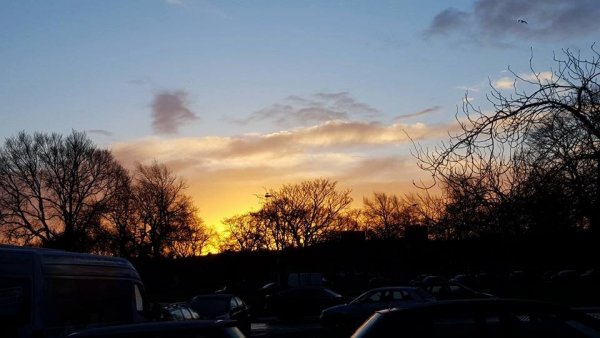


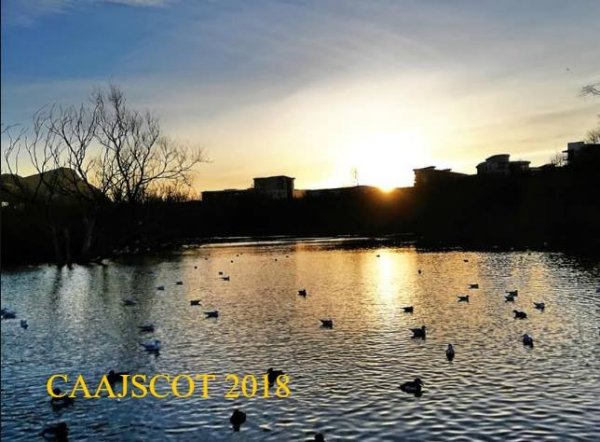
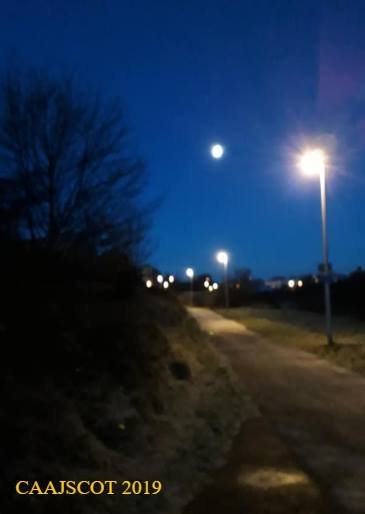








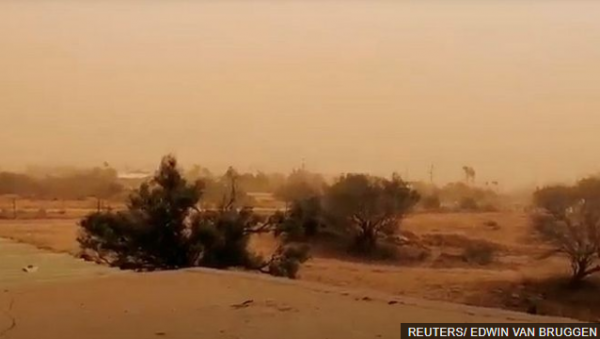

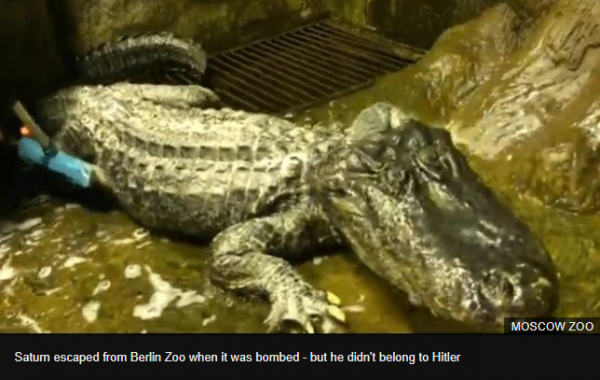
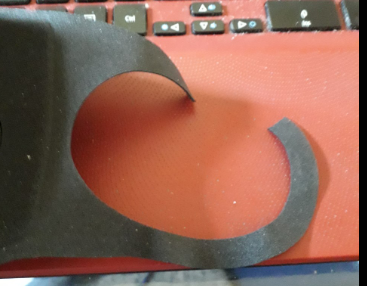

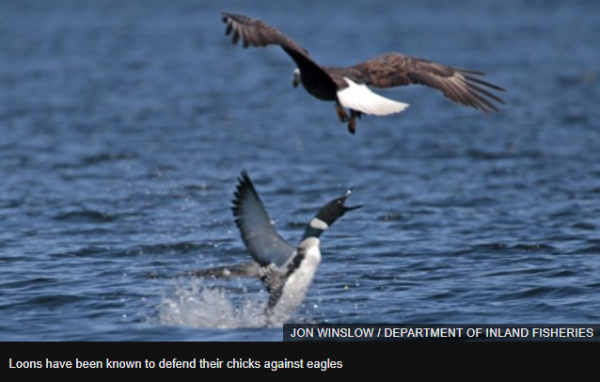
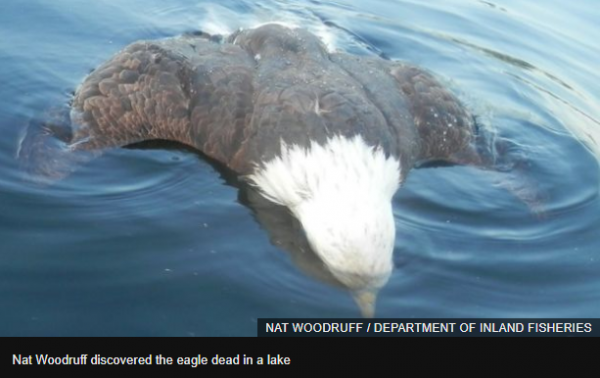
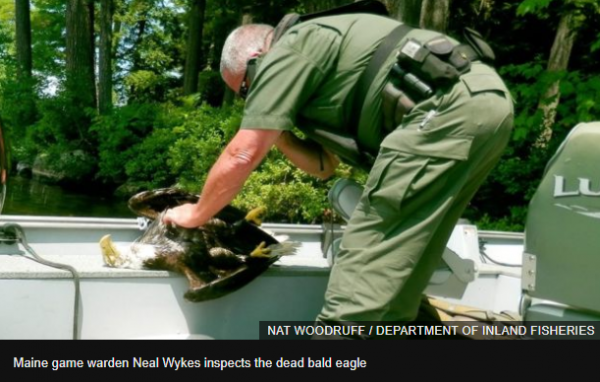

.thumb.png.f8049237713c2add20bd2ce0d85b82fc.png)

